Senior Dog Fitness: Strategies for Maintaining Your Pet’s Health and Activity Levels
This post contains affiliate links. As an Amazon Associate I earn from qualifying purchases.
I just lost my 18 year old dog, Rainey, a few weeks ago. She was very healthy for her age with her only issue being arthritis. I am very passionate about senior dogs and senior dog health so I thought I’d write an article about senior dog fitness.
Maintaining an active lifestyle is crucial for the health and happiness of your senior dog. As your pet ages, physical activity helps prevent weight gain, and keeps the muscles toned, and the joints flexible, resulting in an improved quality of life.
Regular, appropriate exercise can also enhance mental stimulation, which is vital for keeping your dog alert and engaged as they grow older. It’s important to recognize your pet’s changing needs and adapt their activities to match their stamina and health.
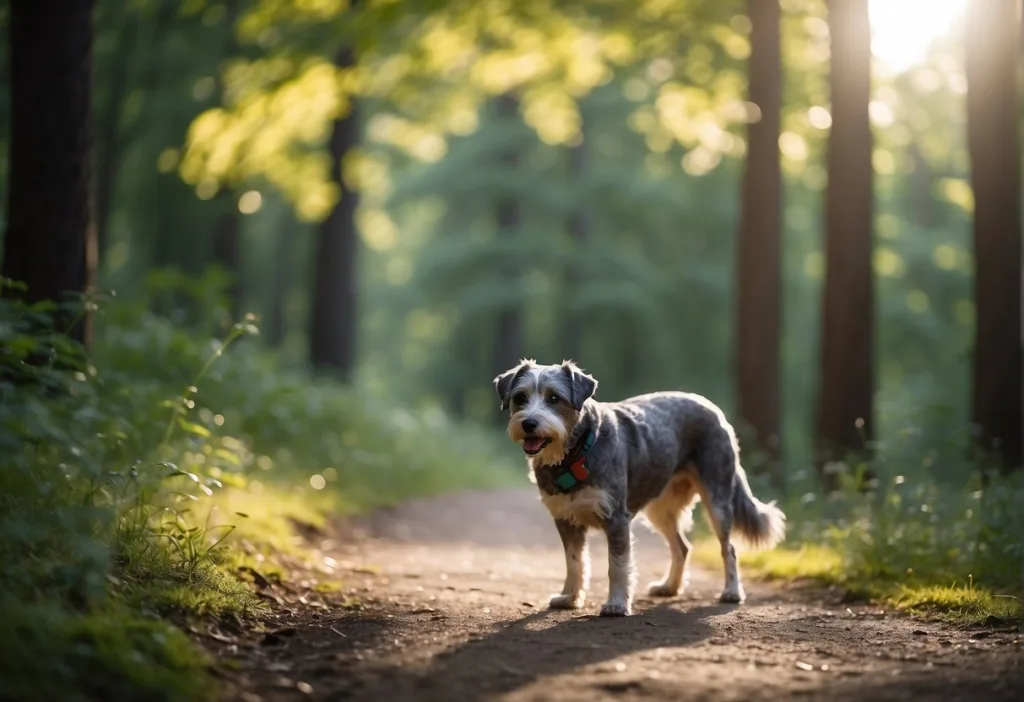
Ensuring your senior dog stays healthy requires a balanced approach to fitness. Gentle exercises, like shorter walks or low-impact activities such as swimming, can be particularly beneficial for older dogs.
These activities help minimize stress on the joints, which can be helpful for pets with arthritis or other age-related conditions. By keeping your senior dog active, you not only cater to their physical needs but also provide them with a sense of purpose and routine, which are essential for their overall wellbeing.
One of the reasons Rainey was so healthy and lived a long life is that we walked every day. When she was younger, we would go anywhere from 2 – 3 miles but as she aged we went shorter distances. However, we never missed a day even when we were having a hurricane!
When it comes to the fitness of your senior dog, it’s imperative to consult with your veterinarian to create a personalized exercise plan. This plan should take into account any health issues, their level of mobility, and their previous activity levels.
Your vet’s guidance will ensure that the activities you choose are safe and that they positively contribute to your senior dog’s quality of life. Remember, keeping your aging pet active is about maintaining mobility and enjoyment of life, not about intensity or endurance.
Understanding Senior Dogs
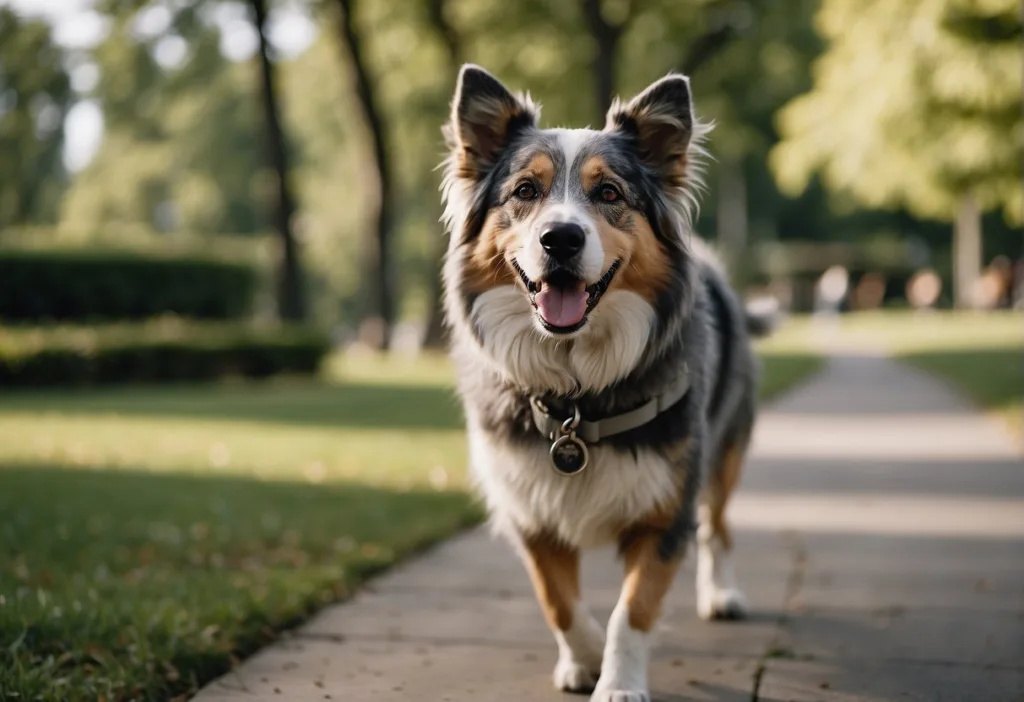
As your dog enters their senior years, they face changes in mobility, cognitive function, and health that require your understanding and consideration to maintain their quality of life.
Recognizing the Signs of Aging
Your senior dog may start showing signs of aging, such as a decrease in energy and a more cautious approach to physical activity. These changes are often gradual.
Mobility issues, like stiffness upon waking, may indicate the onset of arthritis.
In terms of cognitive function, you might notice your dog seems confused or less responsive to commands, which can be signs of cognitive decline.
Changes in hearing may become evident if your dog doesn’t respond when called or seems startled by sudden noises.
Eyesight can deteriorate, noticeable if your dog hesitates at stairs or bumps into furniture. It’s also crucial to keep an eye on their teeth, as dental issues can become more prevalent with age, resulting in pain or difficulty eating.
Regular veterinary check-ups are vital during this stage to monitor these changes.
Common Health Concerns in Older Dogs
Older dogs frequently face several health concerns that need your attention. Two of the most common are:
- Arthritis: This joint condition can make movement painful. Watch for signs such as reluctance to jump or difficulty standing after lying down. Rainey had arthritis for years and we treated it with Glucosamine, fish oil, daily Rimadyl and a monthly Adaquan injection.
- Hearing Loss: Be aware of any decrease in your dog’s response to auditory cues, which could mean a reduction in hearing. Rainey also had hearing loss or maybe it was just selective hearing.
To support your aging pet’s health:
- Prioritize comfortable bedding to ease joint pain.
- Address slip hazards in your home to help prevent falls.
- Maintain oral health with regular brushing and veterinary dental checks.
- Keep up with routine veterinary visits to manage age-related health issues proactively.
Ensuring your senior dog’s comfort and health necessitates a proactive approach to their changing needs.
Senior Dog Nutrition
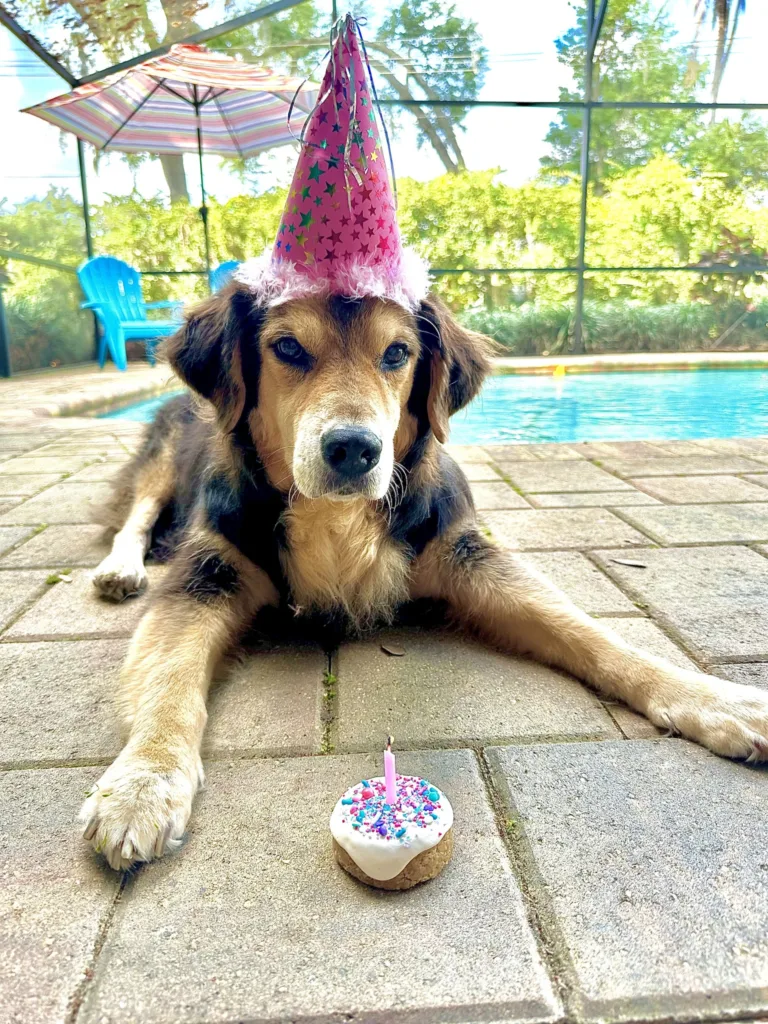
As your dog ages, nutritional needs change, and maintaining optimal health becomes pivotal. It’s essential to adjust their diet to their slower metabolism and to consider supplements that can aid in joint health.
Adjusting Diet With Age
With age, your dog’s metabolism slows down, necessitating fewer calories and adjustments to their nutritional intake to prevent obesity.
Your senior dog’s protein needs could be higher to maintain muscle mass, yet the calories should be lower compared to those for younger dogs. A diet rich in high-quality protein and moderate in calories is beneficial.
Adjust their eating portions and routines to meet these requirements.
- High-quality protein: Aids in maintaining muscle mass and overall body condition. Rainey got chicken on her meals in addition to her regular dog food.
- Reduced calorie intake: Prevents weight gain due to a slower metabolism.
Ensure the food you select contains proper levels of fiber for digestive health and keeps them feeling full.
Supplements and Joint Health
Joint health is a concern for aging dogs, and certain supplements can provide relief and support. Glucosamine is widely recommended to aid with joint health, helping to maintain healthy cartilage and reducing joint discomfort.
Additionally, look for foods or supplements that include omega-3 fatty acids, which possess natural anti-inflammatory properties.
- Glucosamine: Helps in the upkeep of joint cartilage. Rainey received a Cosequin once a day in her food.
- Omega-3 fatty acids: Reduce inflammation and can promote joint health. Rainey also got fish oil in her food.
Incorporate these supplements into their diet to support your senior dog’s mobility and ensure they remain active and healthy.
Senior Dog Exercise and Fitness Regimen
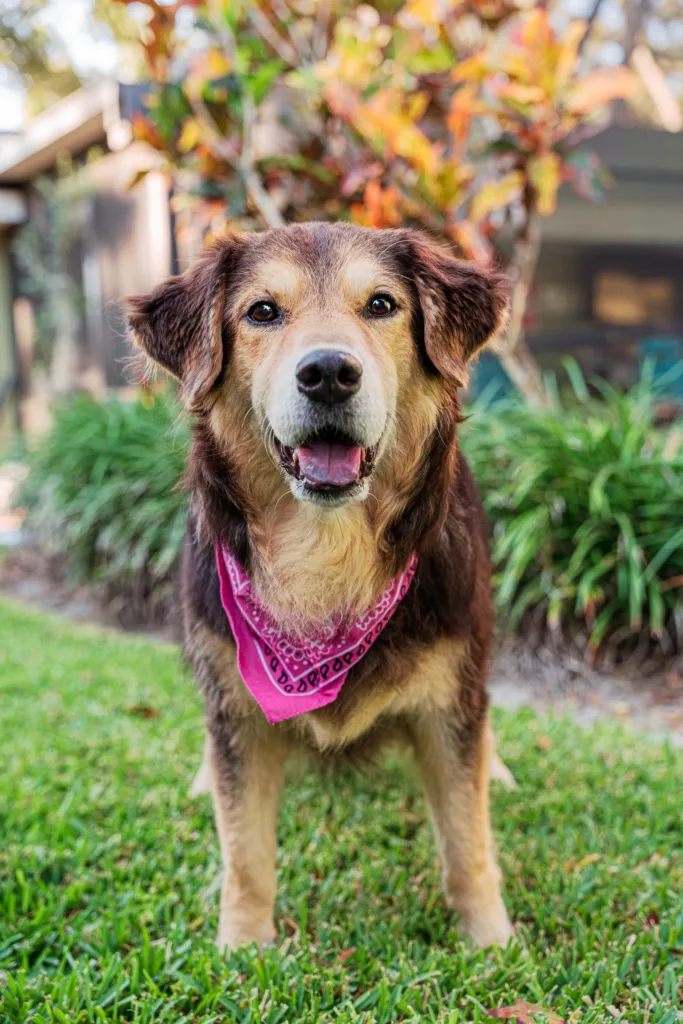
Creating a tailored fitness regimen for your senior dog can significantly enhance their quality of life. By focusing on their specific abilities and prioritizing joint care, you can contribute to their longevity and overall well-being. .
Adapting Exercise to Ability
It’s essential to align your dog’s exercise routine with their current physical capabilities. As dogs age, their endurance and agility may wane, so observing and respecting these changes is crucial.
Walking remains one of the easiest and most adaptable forms of exercise; you can adjust the pace and distance to suit your pet’s comfort level. For instance, shorter but more frequent walks can be better for maintaining muscle tone without overstraining.
I credit Rainey’s longevity to daily walks. When she was younger we walked further and faster, but as she got older it was a walk to the end of the block with plenty of time to sniff everything along the way.
For dogs with declining strength or certain health concerns, underwater treadmills offer a controlled and safe environment. These devices allow for exercise without the additional strain on joints, making them an excellent choice for maintaining fitness in aging canines.
Low-Impact Activities for Joint Care
Focusing on low-impact exercises is key for preserving your senior dog’s joint health. Activities like swimming provide a powerful full-body workout with minimal stress on the joints, supporting endurance and muscle strength. T
o ensure safety and comfort, choose a dog-friendly pool or calm lake, and consider the use of a life vest. We have a pool at our house so I tried to get Rainey to swim, but she was not interested although she would lay by the pool while I swam.
In Orlando, we have a company called Hip Dog Canine Hydrotherapy that specializes in helping your dog learn to swim as well as hydrotherapy which is great for arthritis.
Examples of low-impact exercises to incorporate into your senior dog’s routine:
- Walking on soft surfaces like grass or dirt paths
- Gentle play sessions with soft toys
- Controlled swimming in a safe environment
- Balance exercises such as standing on a wobble board
Incorporating these kinds of activities can help your dog stay fit and happy, granting them a greater chance at a longer and healthier life.
Senior Dog Comfort and Safety
Taking steps to modify your home environment and provide supportive gear can greatly enhance the comfort and safety of your senior dog. These adaptations help manage their chronic pain and prevent injuries.
Home Modifications And Supportive Gear
To support your aging companion, consider the following:
- Ramps: Install ramps to give your dog easy access to higher areas like a bed or car, thus minimizing the stress on their joints. I tried the ramp for Rainey, but she wasn’t interested in it.
- Orthopedic Dog Beds: Offer an orthopedic dog bed to provide firm and even support, ensuring better sleep and reducing discomfort from arthritis.
When assessing your home, pay attention to:
- Flooring: Non-slip surfaces can prevent slips and falls, especially in areas where your dog spends a lot of time. We have a lot of tile in our home so as Rainey aged, I added more throw rugs. She got to point that she could not get up on her own on the tile, but would scoot over a rug because she knew she would be able to push herself up.
- Feeding Area Adjustments: Raise food and water bowls to allow for a comfortable eating position without straining the neck or back.
Managing Pain and Chronic Conditions
Your senior dog’s pain and chronic conditions require careful management:
- Temperature Control: Extreme temperatures can worsen chronic pain, so maintain a moderate and consistent home temperature. A Nest, or other programmable thermostat can help with temperate control in your home.
- Injury Prevention: Regularly inspect your dog’s living space for potential hazards that could lead to accidents or injuries and remove them promptly.
By making these intentional changes and closely monitoring your pet’s health, you can ensure a safer and more comfortable environment.
Senior Dog Health Checks and Preventative Care
As your dog enters its senior years, routine health checks and preventative care become crucial to maintaining your pet’s wellbeing. These measures help to detect and manage health issues that commonly affect older dogs.
Routine Veterinary Visits
Your senior dog should have regular check-ups with the veterinarian at least once a year, although twice a year is often recommended. During these visits, a comprehensive health assessment is conducted, including a physical examination and possibly diagnostic tests such as bloodwork or an ultrasound.
These tests can reveal underlying conditions that may not be immediately apparent, such as organ function issues or the development of cataracts, which are common in aging dogs.
- What to expect:
- Physical examination
- Dental check for signs of tooth decay
- Evaluation for parasites like fleas
- Weight and diet assessment
- Discussion about any behavioral changes
Monitoring for New or Worsening Symptoms
Keep an eye out for new or worsening symptoms, as early detection is key to managing health conditions effectively.
Be vigilant about changes in vision, which could indicate glaucoma or cataracts, and monitor for any signs of discomfort, lethargy, or changes in appetite, which could signify a range of health issues.
- Symptoms to monitor:
- Changes in vision (cloudiness, bumping into things)
- Difficulty eating or bad breath (potential signs of tooth decay)
- New lumps or bumps on the body
- Persistent coughing or changes in breathing
- Unusual scratching (could indicate fleas)
By staying attentive to your senior dog’s health and maintaining regular veterinary visits, you can play a proactive role in ensuring your furry companion’s golden years are comfortable and healthy.

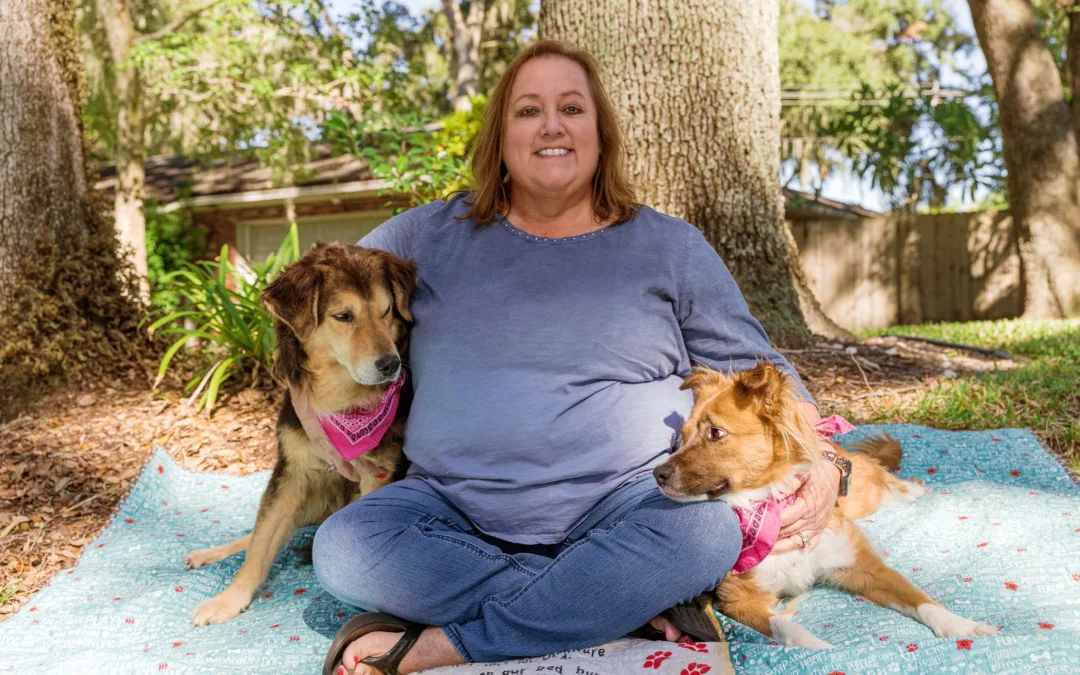
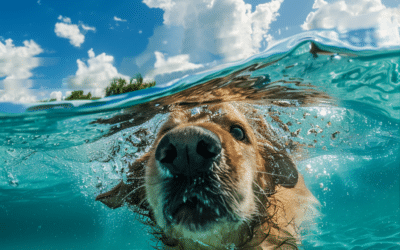
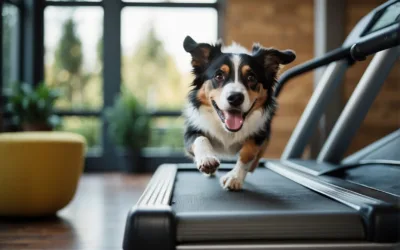

Recent Comments